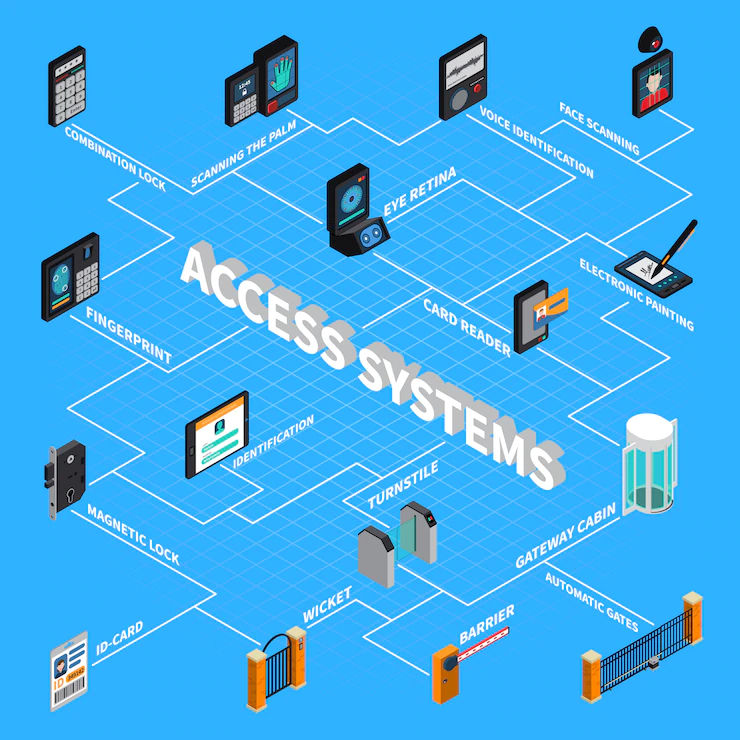When installing a biometric access control system for your building or organization, you need to think about a number of factors, including your current security policies and existing infrastructure. Generally, biometric modalities are fingerprint, iris, palm vein, finger vein, and facial recognition. In addition to these, there are multimodal biometric systems. These systems provide multi-layered security and are compatible with existing security systems. In this article, we’ll discuss some of the benefits of biometric access control.

Pros of biometric access control system
Biometric access control systems are becoming a key part of security infrastructure. These systems use biometric data to verify users, providing centralized control over security. This eliminates the need to constantly reset passwords and is easy to maintain and scale with your company’s growth. The pros of biometric identification management systems include the simplicity of installation and management, reducing upfront investment and ongoing management costs. These systems also reduce the potential for fraud, preventing unauthorized entry.
The pros of using biometrics are numerous. First, they are fast. It only takes a few seconds for a biometric device to authenticate a person, unlike a pin code or key card. Another major benefit of biometrics is that they do not cause human error. They cannot be changed or tampered with, making them much more secure than their alternative. Additionally, they are easier to store and maintain than any other system, so the pros outweigh the cons.
The pros of biometric access control systems also extend to their ease of use. Small businesses should learn as much as possible about the technology before implementing it. Besides allowing users to access building with ease, biometrics require no passwords and no access cards. A biometric access control system can grow with the business, and it will keep your facility secure for many years to come. Just make sure you keep your biometric devices clean and free of debris.
Basic components of a biometric access control system
A biometric access control system has four major components: a sensor device, a quality assessment unit, a feature comparison and matching unit, and a database. Each component performs a different function in biometric authentication. The biometric reader collects the verification data from a person’s fingerprint. The optical sensor, used for fingerprint biometrics, produces an image of the fingerprint ridge structure.
Biometric access control systems are highly effective and do not compromise existing security systems. They do not require the use of fancy machinery or needlessly high-tech equipment. They also offer extended benefits, such as enhanced security. Whether used at business premises, airports, subways, and train stations, biometric access control systems are extremely versatile and are the ultimate in security. Some biometric systems are also used to safeguard pharmaceuticals.
Biometric systems are easy-to-use. Unlike passwords or cards, biometrics are a unique ID that does not change. Moreover, biometrics save resources, as biometric features reduce the risk of human error. The machines also ensure optimum efficiency. Besides, biometric machines require minimal manual intervention, which reduces errors. Further, biometrics are easy to use, so there is no learning curve.
Privacy concerns with biometric access control system
The introduction of biometric access control systems has raised privacy concerns. This is because biometric systems record physical and behavioural characteristics of people. These details are captured at the time of enrolment and can be compared to stored records to determine an individual’s identity. Biometric images are typically stored and can be compared to other pictures or live people to determine an individual’s identity. If the storage device is lost or stolen, this information may be compromised.
While fingerprints, iris, and face patterns remain the same, facial features change over time. Facial features may be altered through cosmetics, surgical procedures, or disguises. Biometric data can be used to track an individual, but there are concerns that misuse of biometrics may lead to false positives or negatives. Because of the lack of regulations for biometrics, there is little recourse for individuals who believe their data is being misused.
Although biometrics are a valuable means of securing workplaces, there are still privacy concerns. Many people are concerned about the use of their biometric data for unrelated purposes. While there is no way to duplicate a fingerprint or facial image, biometric systems can be misused to identify a person. The risk of misuse is greater when large databases are used to verify identities. Some companies have even seen fraudsters using biometrics to obtain passwords.